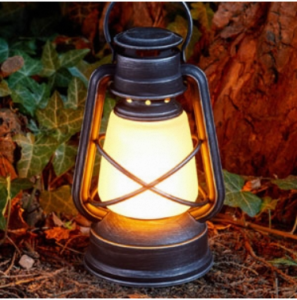
Battery operated lights are a convenient and efficient way to illuminate your home, office, or outdoor area. They provide a quick and easy way to light up a space without the need for wiring, and they come in a variety of styles to suit any need. But how do you choose the right battery powered lights for your needs?
1. Lighting needs: Battery operated lights come in a variety of styles, from spotlights and floodlights to ambient lighting and task lights. Spotlights and floodlights are ideal for highlighting specific areas, while ambient lighting is better suited for larger areas or for creating a softer, more general type of illumination. Consider the size of the area you need to light and the type of lighting effect you want.
2. Brightness: The brightness of battery operated lights is measured in lumens, and it is another critical factor to consider. If you need bright lights for task lighting, you may want to opt for lights with high lumens. However, if you need ambient lighting, dimmer lights with lower lumens will suffice.
3. Types of Battery Operated Lights: Generally speaking, there are three main types of battery operated lights: LED, fluorescent, and incandescent.
LED lights are the most energy efficient and long-lasting of the three types. They are also the most expensive, but offer the brightest light for the smallest size. Fluorescent lights are less energy efficient, but provide a more natural light than LED lights. They are also relatively inexpensive and can be found in a variety of shapes and sizes. Incandescent lights are the least energy efficient and short-lived of the three types, but they provide the warmest light. This makes them a great choice for outdoor or mood lighting.
4. Size and Placement: The size and placement of the battery-operated lights you choose will depend on the space you want to illuminate. If you plan to use the lights in a small area, you may need fewer and smaller lights. However, if you want to illuminate a large space, you may need more and larger lights.
5. Battery Life: Battery life is an essential factor to consider when choosing battery-operated lights. You want lights that will last long enough to serve their purpose without requiring frequent battery replacements. Look for lights that have a long battery life, such as those with LED bulbs that consume less power.
6. Type of Batteries: Different types of batteries power battery-operated lights, and each has its advantages and disadvantages. Alkaline batteries are the most common and affordable, but they have a shorter lifespan than other batteries. Lithium batteries are more expensive but have a longer lifespan and can operate in extreme temperatures. Rechargeable batteries are eco-friendly and cost-effective in the long run, but they require a charging station and may have a lower capacity.
7. Remote Control: Some battery operated lights come with remote control, which allows you to control the lights’ brightness and turn them on and off without having to physically access the lights. If you plan to use the lights in hard-to-reach places or want to adjust the lighting without getting up from your seat, you may want to opt for lights with remote control.
8. Cost: The cost of battery-operated lights varies depending on the type, size, and features. Set a budget and choose lights that meet your requirements without breaking the bank. Remember to consider the long-term cost of batteries, especially if you opt for non-rechargeable batteries.
9. Durability: Battery-operated lights may be exposed to different environments, and it is essential to choose lights that are durable and can withstand the elements. Look for lights that have a durable casing, such as those made from metal or hard plastic, and are waterproof or water-resistant if you plan to use them outdoors.
Choosing the right battery powered lights can be tricky, but with the right information and considerations, you can find the perfect lights to suit your needs. Keep these factors in mind, and you’ll be sure to find the right lights for your home, office, or outdoor area.







